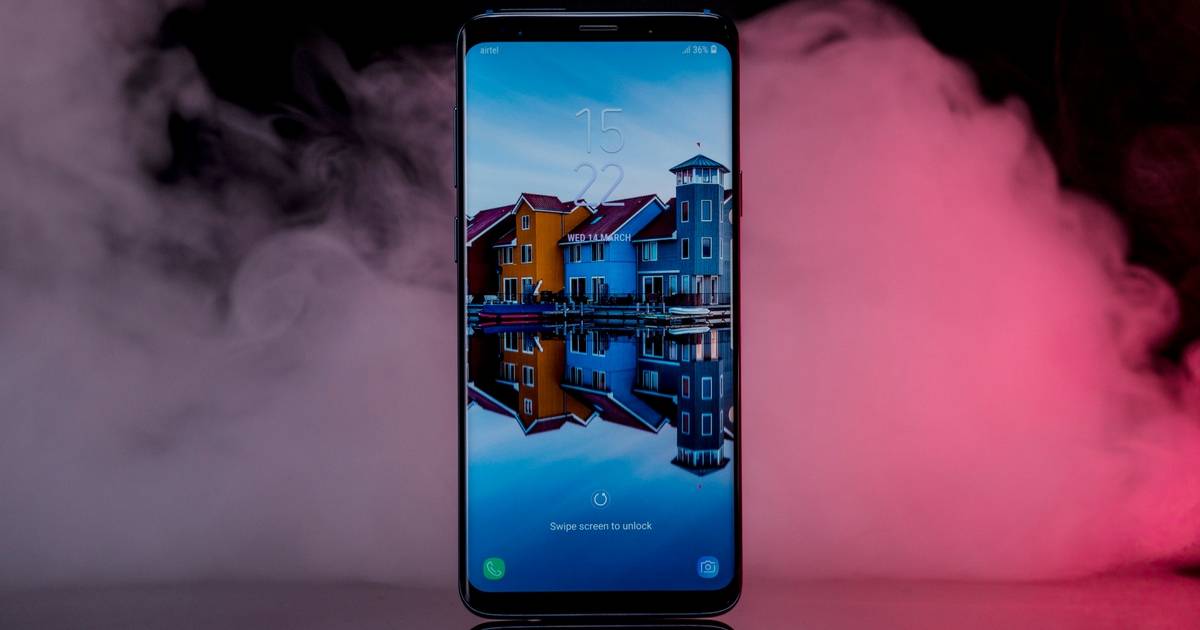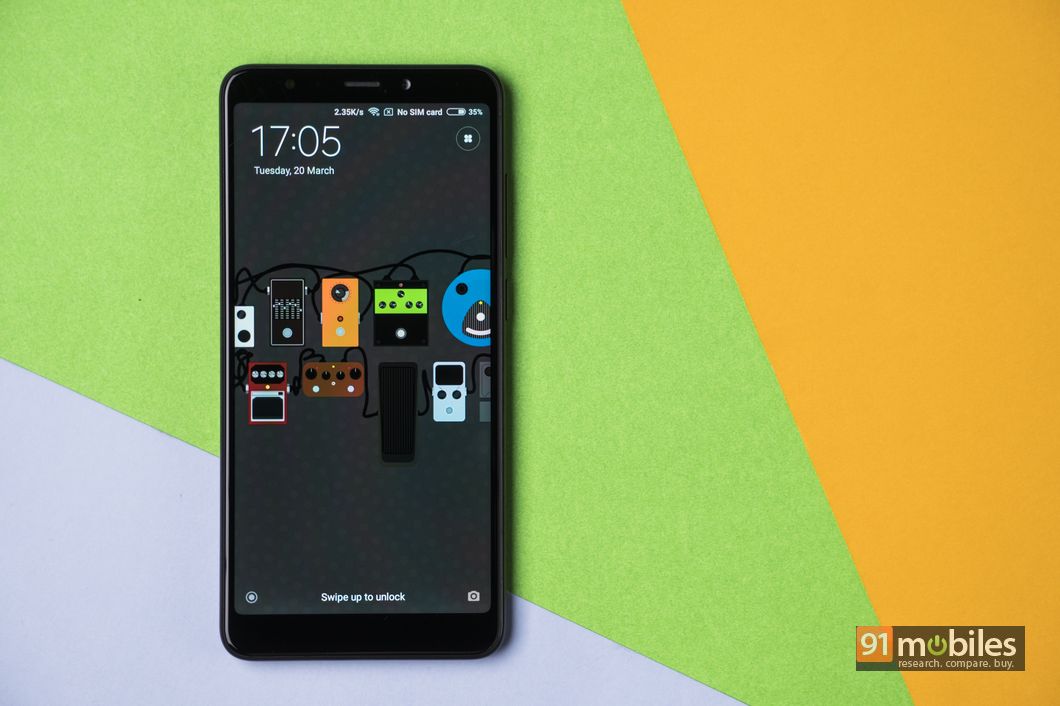
“From Samsung’s flagship duo to mid-range smartphones, March 2018 witnessed it all”
In the month following the MWC 2018, one can expect a slew of launches lined up. Moreover, March – April is that time of the year when top smartphone brands start queueing their major launches for the year. Last month, India received the flagship duo from Samsung, first set of Android Go smartphones and mid-range smartphones. For those wondering, we have curated this list of top smartphones launched in the country in March.
Table of Contents
Samsung Galaxy S9 / S9+

Samsung announced its flagship duo Galaxy S9 and S9+ (review) at its Unpacked Event held on February 25th amidst much fanfare. Soon after, in the first week of March, these handsets landed in India. For the uninitiated, both smartphones come with Infinity Displays with aspect ratios of 18.5:9, IP68 water-resistant glass-sandwich design and boot Android Oreo. As for the core specs, Galaxy S9 ships with a 5.8-inch QHD+ display and is powered by Exynos 9810 processor mated to 4GB RAM. It comes in three variants – 64GB, 128GB, and 256GB. In terms of optics, you get a 12MP rear snapper with a dual aperture (that can be switched between f/1.5 and f/2.4) and an 8MP front camera. A 3,000mAh battery completes the spec sheet of the handset.
The Galaxy S9+, on the other hand, retains the spec sheet from the regular model, except for a bigger 6.2-inch QHD+ display, 6GB RAM, 12MP dual rear camera setup (the primary camera also offers dual aperture) and a bigger 3,500mAh battery. These are among the best Android smartphones that money can buy at the moment.
OPPO F7

Chinese handset maker OPPO launched its latest smartphone – the F7 (review) in India. The handset features a powerful selfie camera and a 6.23-inch full HD+ display (2,280 x 1,080 pixels) with a cutout on top. The display flaunts an aspect ratio of 19:9 and covers 89 percent of the fascia. A MediaTek Helio P60 octa-core chipset ticks at its core. OPPO is offering the smartphone in two configurations – 4GB + 64GB and 6GB + 128GB. In terms of cameras, the smartphone gets a 25-megapixel sensor at the front with AI integration and 16-megapixel primary shooter with an LED flash. The phone ships with Android Oreo-based ColorOS v5.0 and is powered by 3,400mAh battery. For security. you get a rear-mounted fingerprint scanner and face unlock feature.
Vivo V9

Vivo also boarded the notch bandwagon with the launch of its V9 (review) smartphone in India last month. It flaunts a 6.3-inch display with a notch up top, which offers a 19:9 aspect ratio and full HD+ resolution (2,280 x 1,080 pixels). The smartphone is powered by an octa-core Qualcomm Snapdragon 626 SoC, which is accompanied by 4GB RAM and 64GB storage. For imaging, the V9 flaunts a 16-megapixel + 5-megapixel camera module on the rear and 24-megapixel selfie shooter on the front. The smartphone runs Funtouch OS 4.0 based on Android 8.1 Oreo and is powered by 3,260mAh. For security, the phone gets an AI-based face unlock and a rear-mounted fingerprint scanner.
Xiaomi Redmi 5

Xiaomi’s Redmi 5 (review) followed up the launch of its bigger Redmi Note 5 siblings. The compact smartphone ships with a 5.7-inch display bearing HD+ resolution and an 18:9 aspect ratio. To handle the performance, it gets a Snapdragon 450 processor mated to Adreno 506 graphics. The handset comes in three variants – 2GB RAM + 16GB storage, 3GB RAM + 32GB storage and 4GB RAM + 64GB storage. It sports a 12-megapixel rear camera with dual-tone LED flash and 5-megapixel selfie camera with a dedicated soft LED flash. The smartphone boots Android Nougat-based MIUI 9 out of the box and is fuelled by a 3,300mAh battery. The phone also features a rear-mounted fingerprint scanner.
Samsung Galaxy J7 Prime 2

Apart from its flagship series, Samsung also expanded its J-series of smartphones by launching the Galaxy J7 Prime 2 in India last month. The latest launch comes as a slightly upgraded variant of the Galaxy J7 Prime, which was launched two years back. It offers a 5.5-inch full HD display and is powered by a 1.6GHz octa-core processor. The chipset has been mated to 3GB RAM and 32GB storage, which can be further expanded. For imaging, the phone sports a 13-megapixel camera on both front and rear panels. A 3,300mAh battery keeps the smartphone running.
Nokia 1 and Lava Z50

The month of March also witnessed the launch of the first set of Android Go smartphones – the Nokia 1 (first impressions) and Lava Z50 (first impressions). Both these handsets come with the latest Android 8.1 Oreo (Go Edition), 4.5-inch display, MediaTek MT6737 SoC, 1GB RAM and 5-megapixel rear camera. However, while the Z50 gets a 5-megapixel selfie shooter with a dedicated LED flash, the Nokia 1 offers a 2-megapixel front camera. However, Nokia’s offering somewhat makes up for this drawback with IP52 protection and customisation options offered with interchangeable back covers. Apart from this, there is a slight difference in the pricing of both handsets and the Nokia 1 is slightly more expensive compared to the Lava’s offering.
Worthy mentions

Apart from the smartphones above, there are a couple of others that deserve a special mention on this list. The Micromax Bharat 5 Pro comes in as a budget offering with a massive battery under the hood. Its salient features include a 5.2-inch HD IPS display, 1.3GHz quad-core processor, 3GB RAM, 32GB storage, 13MP primary camera, 5MP selfie shooter and a 5,000mAh battery. Moving on, another smartphone that deserves a mention is the iVOOMi Anniversary Edition i1s, which brings a 5.45-inch HD+ display, MediaTek MT6737v processor, 3GB RAM, 32GB storage, 13-megapixel + 2-megapixel rear camera, 8MP front snapper and 3,000mAh battery. Both these smartphones also get face unlock for security.
This concludes our list of top smartphones launched in March 2018. Did you pick up any of these or are planning to? Let us know in the comment box below.












